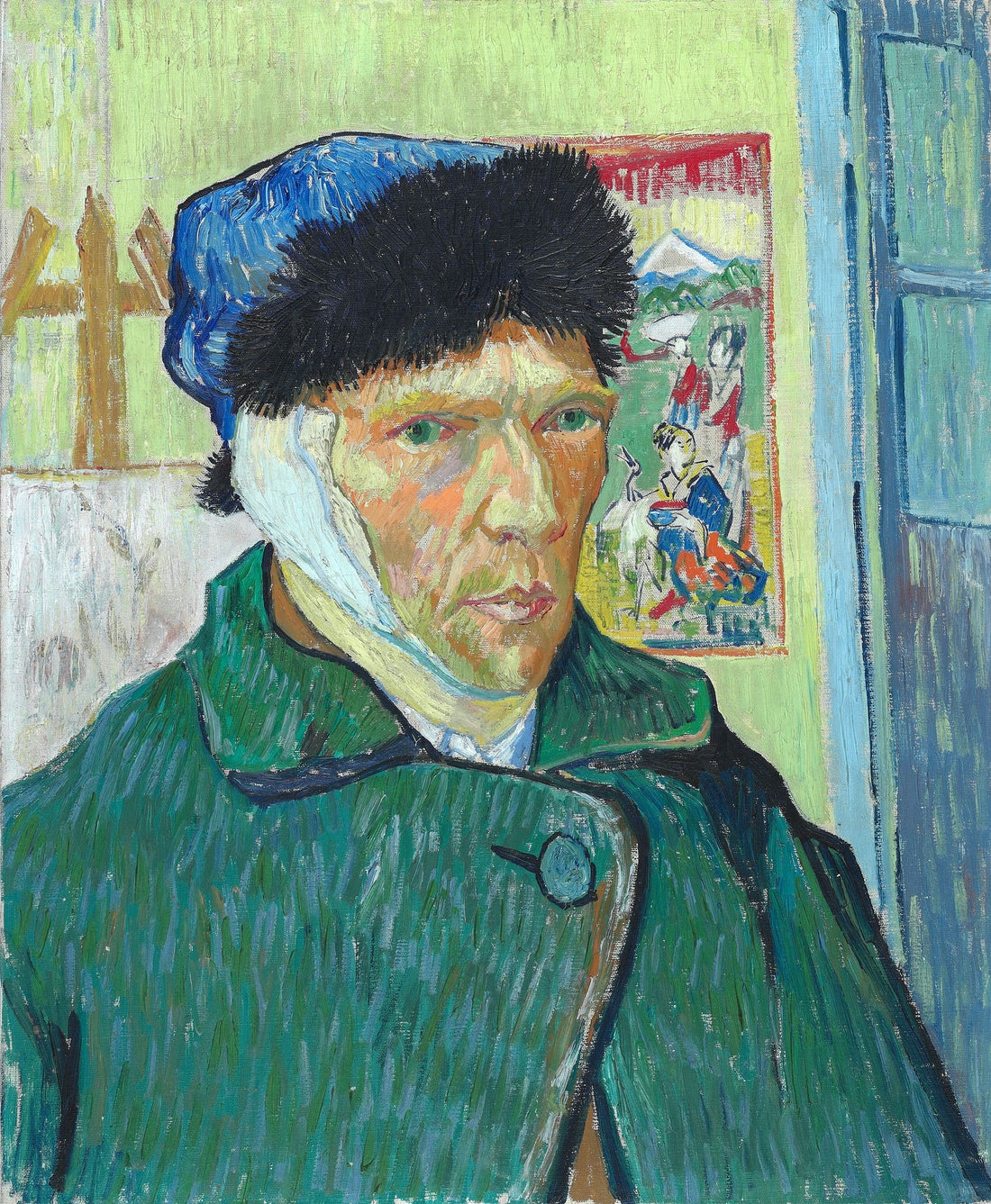This month, we’re diving into the theme of identity in art, examining how artists reflect themselves and their cultures through portraits and other creative expressions. We’re spotlighting iconic figures like Frida Kahlo, Cindy Sherman, Vincent van Gogh, and Pablo Picasso, all of whom used art as a powerful lens to explore and express who they are.
From Sherman’s transformative personas, and Kahlo’s deeply personal self-portraits, to van Gogh’s emotional intensity, and Picasso’s evolving styles, each artist invites us to reflect on how identity is shaped, and how we choose to present it.

Frida Kahlo: Self-Portrait with Thorn Necklace and Hummingbird
We begin with Frida Kahlo, whose Self-Portrait with Thorn Necklace and Hummingbird is rich with symbolism and emotion. In this piece, Kahlo weaves together personal pain, resilience, and cultural heritage. The thorn necklace suggests suffering, the dead hummingbird evokes themes of love and death, and the stoic animals surrounding her hint at inner strength. For Kahlo, identity was inseparable from experience, both personal and political, and her art remains a bold portrayal of self.

Cindy Sherman: Untitled Film Stills (Pictured: Untitled Film Still 21)
Next, we spotlight Cindy Sherman, an American artist known for her innovative approach to self-portraiture. In her landmark series Untitled Film Stills (1977 to 1980), Sherman becomes a chameleon, embodying various female stereotypes found in film and media. Her work challenges the notion of a fixed identity, instead portraying it as something performed, constructed, and constantly shifting. Sherman doesn’t just explore identity, she unmasks it.

Lucian Freud: Reflection (Self-Portrait)
Moving from photography to fine art, we feature British painter Lucian Freud and his self-portrait Reflection. Painted with his trademark impasto technique, this raw and unflinching image offers a glimpse into the artist’s soul. Freud’s intense gaze and textured brushwork convey not just how he looked, but how he felt. Though often private in life, Freud didn’t reveal much in words, but through this self-portrait and other works, we get a powerful glimpse into his identity.

Vincent van Gogh: Self-Portrait with Bandaged Ear
When it comes to emotional honesty, few artists rival Vincent van Gogh. In works like Self-Portrait with Bandaged Ear, van Gogh reveals the mental and emotional turbulence that shaped his identity. His bold brushstrokes, vivid colours, and piercing eyes speak volumes. For van Gogh, painting was both an outlet and a form of self-exploration. Through his portraits, we witness a man struggling with isolation, vulnerability, and a profound need to be understood.

Pablo Picasso: Self-Portrait (1907) and Beyond
Pablo Picasso’s self-portraits reflect an ever-evolving sense of identity. From his early realistic sketches to the abstract, fragmented faces of his Cubist period, Picasso continuously reinvented himself. A standout example is his 1907 self-portrait, often associated with the beginnings of Cubism. Through radical shifts in style, Picasso explored how identity can be fluid, multifaceted, and influenced by cultural and personal transformations.
We hope you enjoyed this brief journey through Identity in Art. These artists, through paint, photography, and powerful self-expression, show us that identity is not a single truth but a complex, evolving narrative. Their work invites us to ask, Who are we, really? And how do we choose to show the world? Stay tuned for next months theme!

